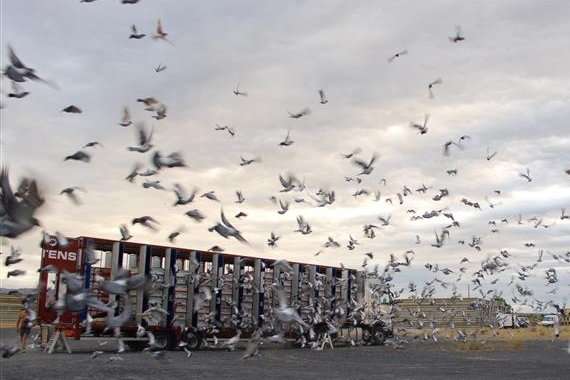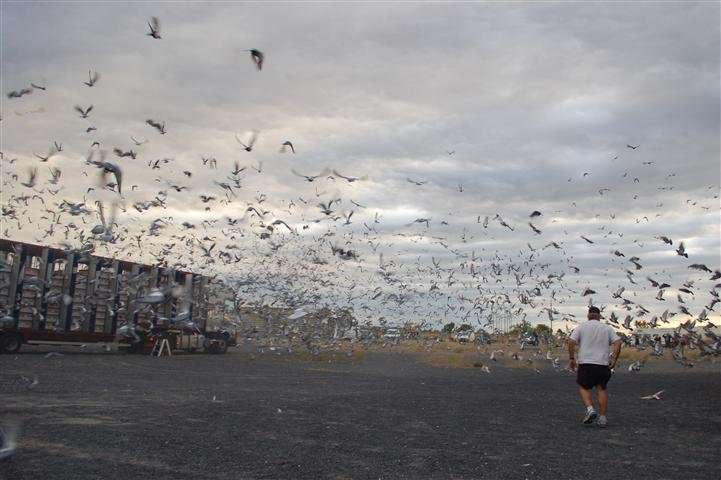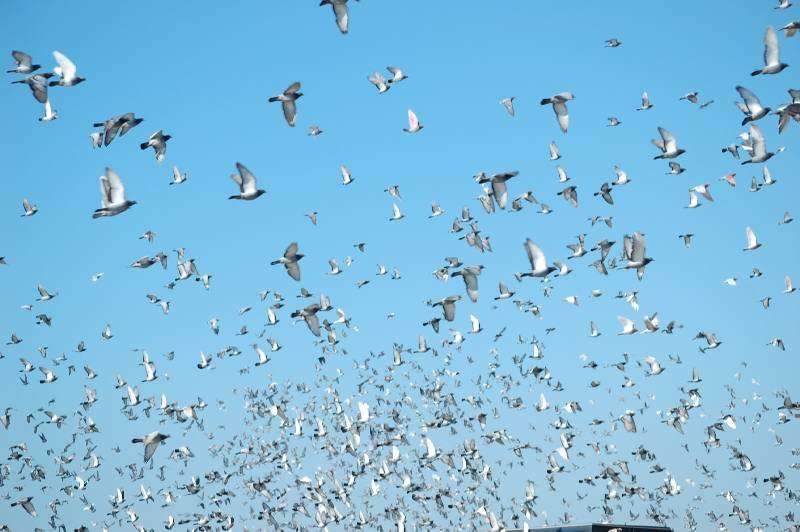Using whole genome analysis to home in on racing pigeon performance

Before the Wi-fi and the Internet, the telephone and the telegraph, the original instant messaging services of society were homing pigeons. After becoming the first domesticated birds, for an estimated 2,000 years, these reliable messengers have brought news from battlefronts and between heads of state.
Then, about 200 years ago, fanciers from Belgium created an international sporting sensation, breeding racing pigeons to have ever faster flights and longer homing skills. Nowadays, these birds can fly up to 1,000 kilometers from home at speeds up to 70 kilometers per hour, and the best of them fetch thousands of euros on the breeding market in a continual effort to one-up the competition.
Recently, scientists have been using state-of-the art genomic tools to also help home in on the special traits of racing pigeons.
A scientific team led by Malgorzata Anna Gazda and Miguel Carneiro, performed the first whole genome sequencing of 10 racing pigeons as well as data from 35 different breeds, and has now identified new clues in racing pigeons that may help enhance their performance. The study also including looking at gene expression differences (using RNA sequencing expression data) in the brains and muscle tissue of racing pigeons versus other breeds.
"Our genome-wide scan of selection sheds light on the genetic architecture and mode of selection underlying the faster flight, endurance, and accurate navigation of racing pigeons," said Malgorzata Anna Gazda. "It furthermore provides a catalog of candidate genes, with some compelling examples of genes likely to underlie racing performance phenotypes."

Their analyses demonstrated that racing pigeons are unique, and genetically differentiated from other pigeon breeds, and that there is adaptation in several regions of their genomes, and key differences in gene expression in brain and muscle tissues.
But as with other traits, there is no single gene responsible for the differences.
"Strikingly, among a dataset of 17,425,765 million variants, we did not find a single example of a variant with diagnostic alleles between racing and non-racing pigeons," said Miguel Carneiro. "It is unlikely that any single genetic change is sufficient to account for the superior flight and orientation abilities of racing pigeons. In addition, we recovered a considerable number of signatures of selection across the genome, indicating a polygenic basis for the adaptations to extreme performance in this breed. This pattern is perhaps expected considering the number of body systems that must interact for superior racing performance (cardiovascular, respiratory, musculoskeletal, and nervous systems)."
In particular, they have identified a number of candidate genes that were found to have variants in the racing pigeons, with (one, called is also differentially expressed in muscle, and both have functions can be related to athletic performance).
"Despite the paucity of fixed genetic variation between racing and non-racing pigeons, our genome-wide screen suggests that signatures of positive selection are common across the genome of racing pigeons," said Miguel Carneiro.

Their RNA-seq analysis revealed low to moderate changes in gene expression between racing and non-racing pigeons. The patterns from a total of 242 RNA transcripts were shown to be differentially expressed with brain showing fewer differences (29) when compared to muscle (213).
"The genes CASK, SIK1, and PTPRD are good candidates to be implicated in racing performance phenotypes," said Malgorzata Gazda. "CASK has been implicated in the development of neuromuscular junctions which play a critical role in the function of skeletal muscle. Differences in the morphology and physiology of such junctions have been associated with muscle performance. SIK1 has been shown to regulate muscle function and growth by controlling the expression of muscle specific genes SIK1 has also been shown to regulate hepatic lipogenesis, which plays an important role in energy homeostasis. Finally, PTPRD influences the magnitude of long-term potentiation of synapses in the hippocampus, a brain region that plays a role in spatial memory and is thought to be associated with bird navigation."
The authors conclude from that the greater athleticism and superior navigation of racing pigeons are complex, polygenic traits, and that adaptive changes in this breed were the result of selection on variation present in the breeds that formed the founding population.
Future follow-up studies, such as genome-wide association studies (GWAS) or selective breeding to map locations near candidate genes, will be performed to delve deeper into the complex physiological and adaptive changes of racing pigeon navigation, flight and faster speeds.
More information: Malgorzata A Gazda et al, Signatures of selection on standing genetic variation underlie athletic and navigational performance in racing pigeons, Molecular Biology and Evolution (2018). DOI: 10.1093/molbev/msy030
Journal information: Molecular Biology and Evolution
Provided by Oxford University Press


















